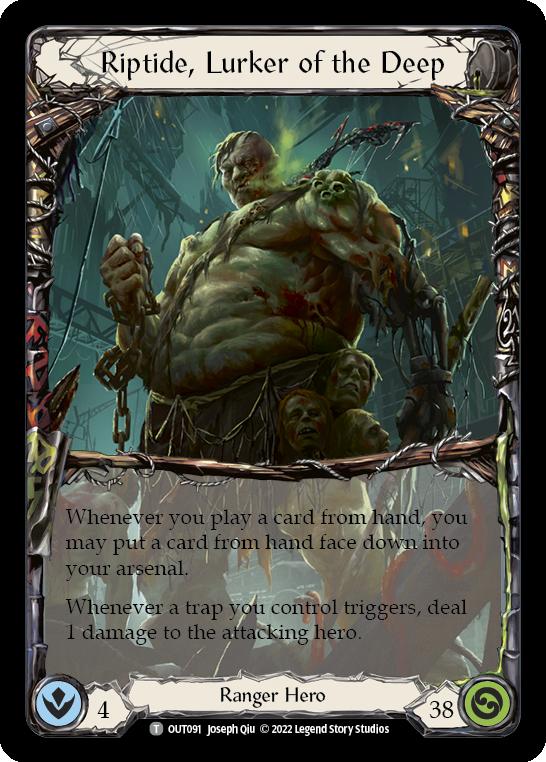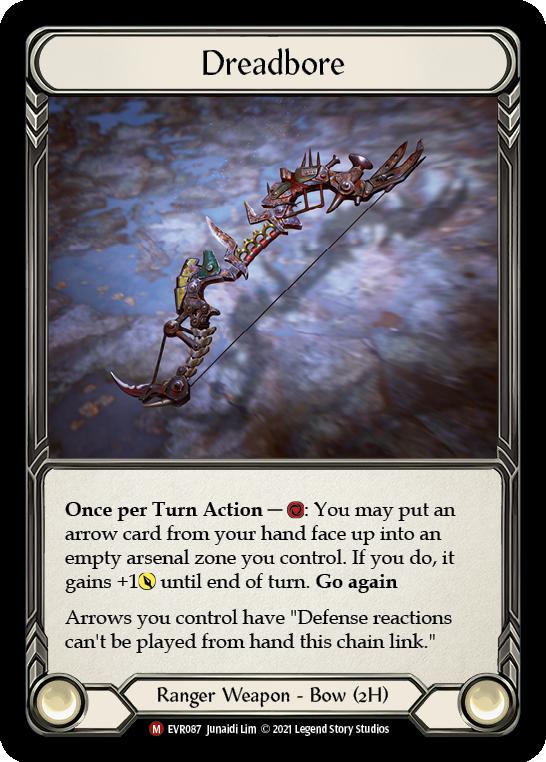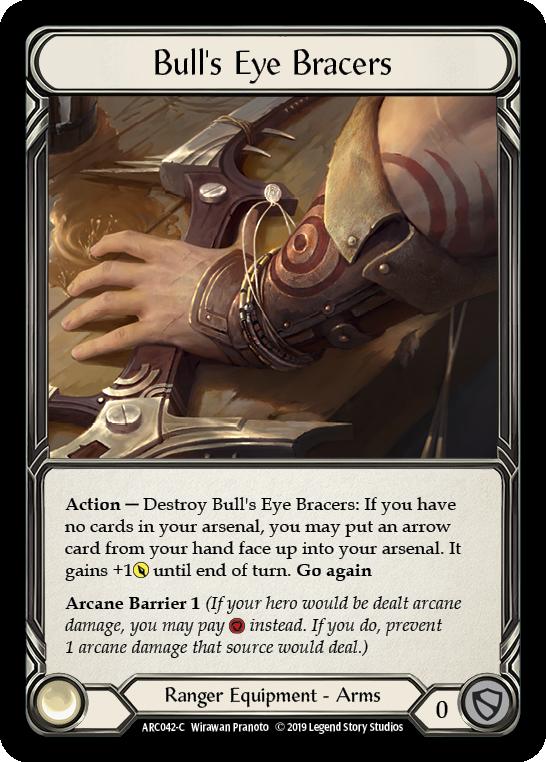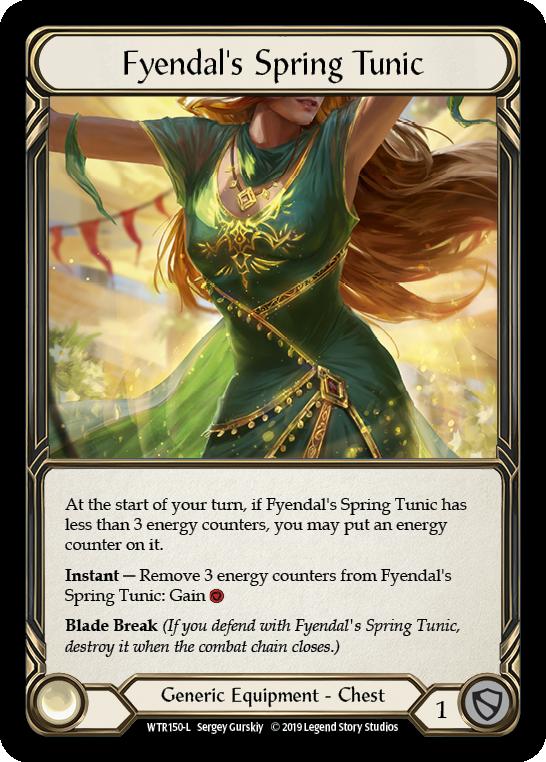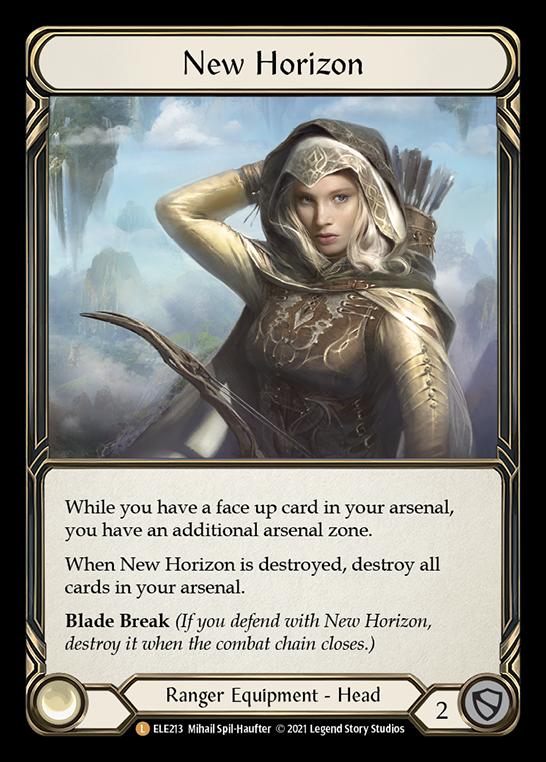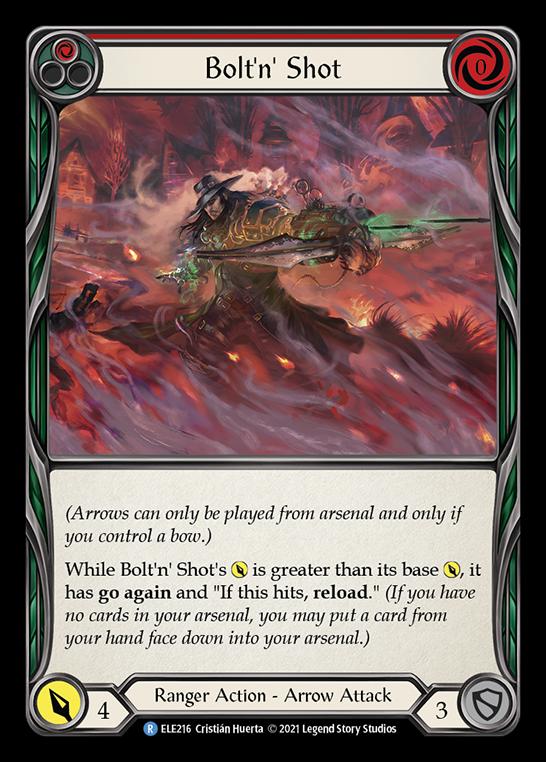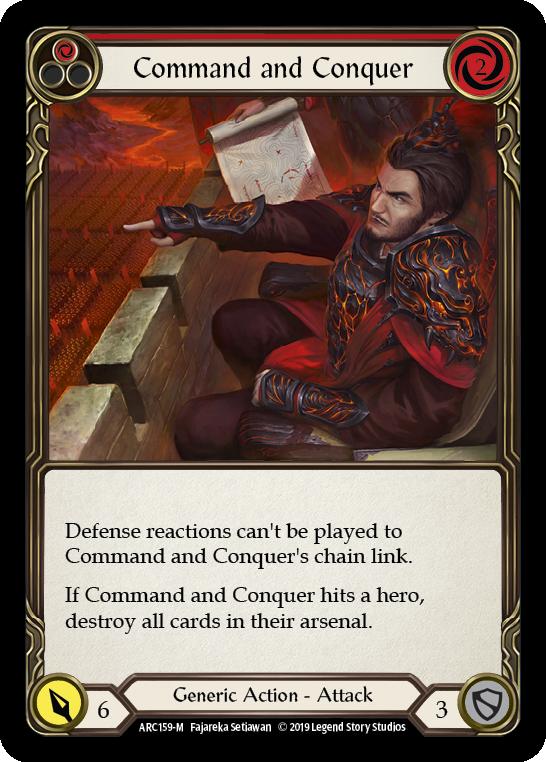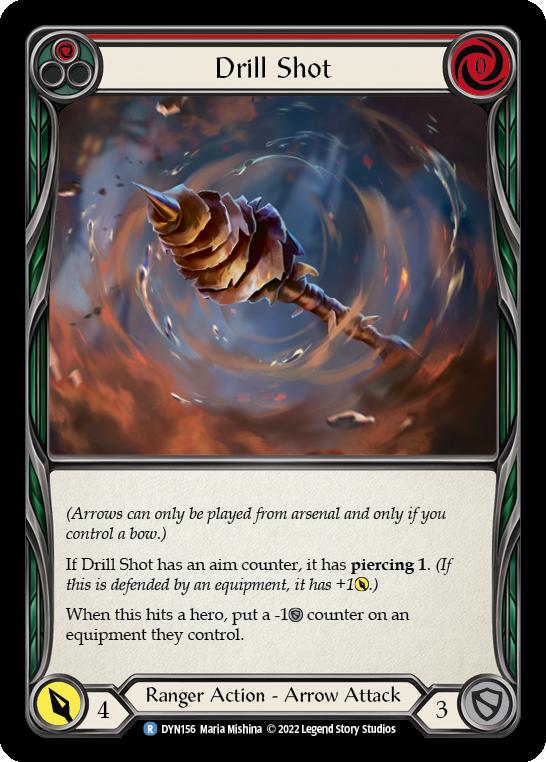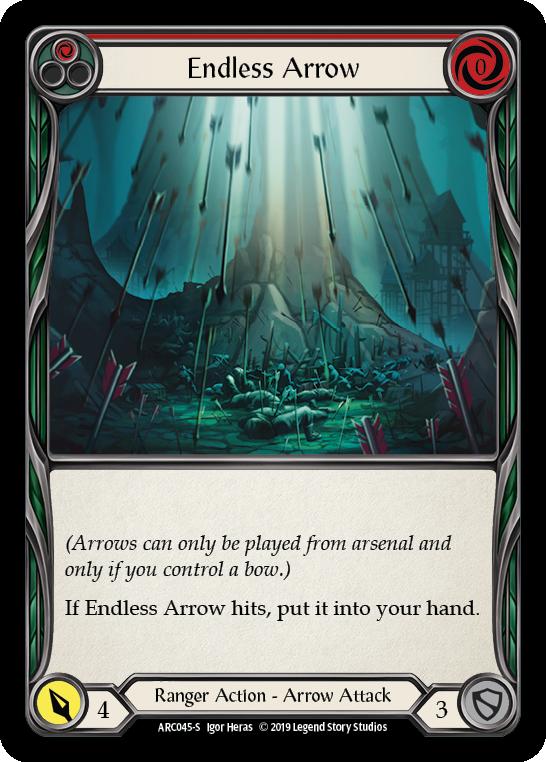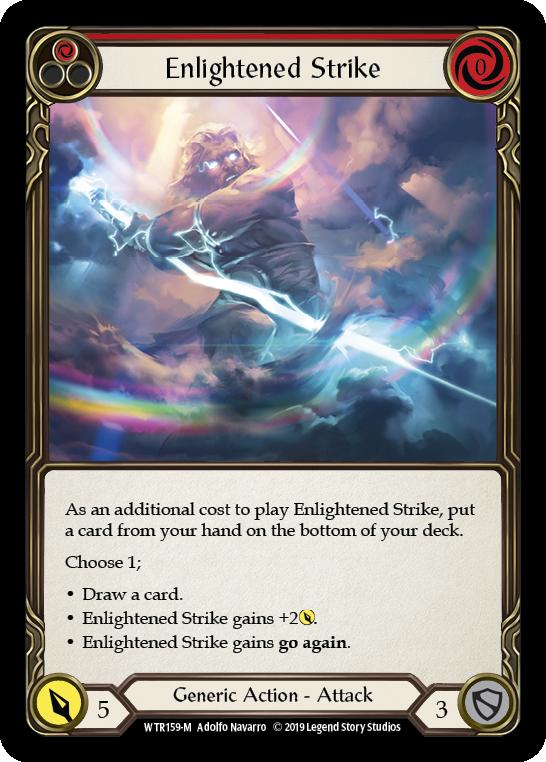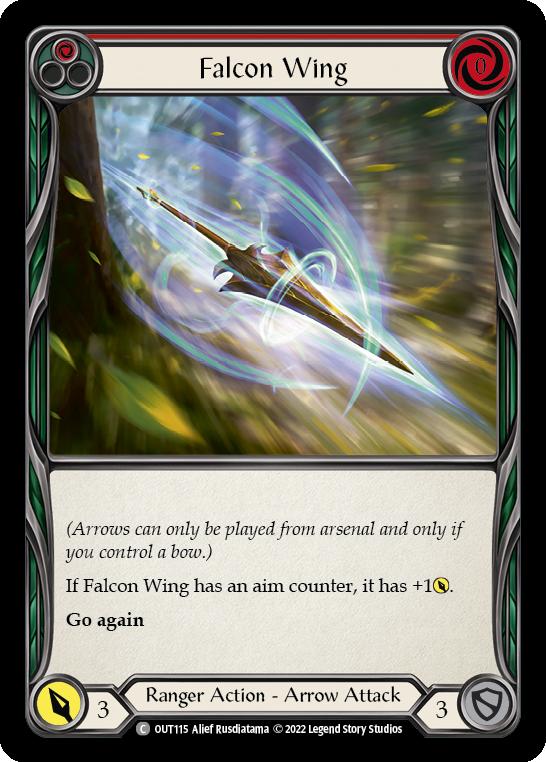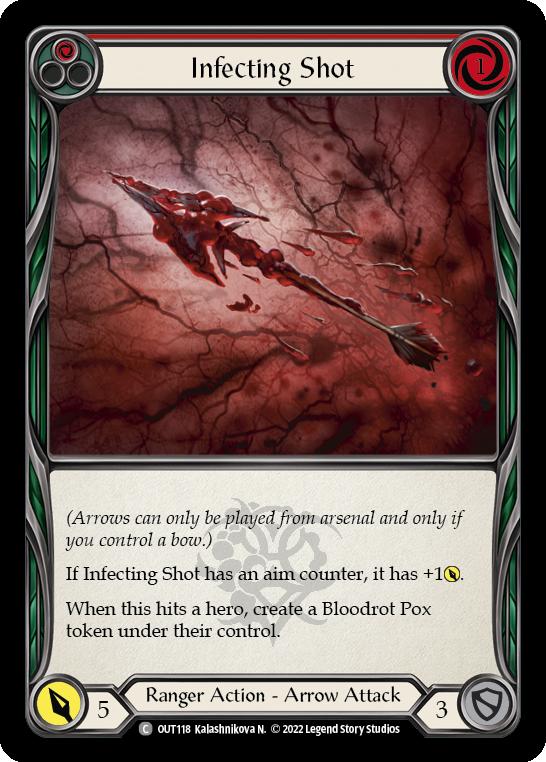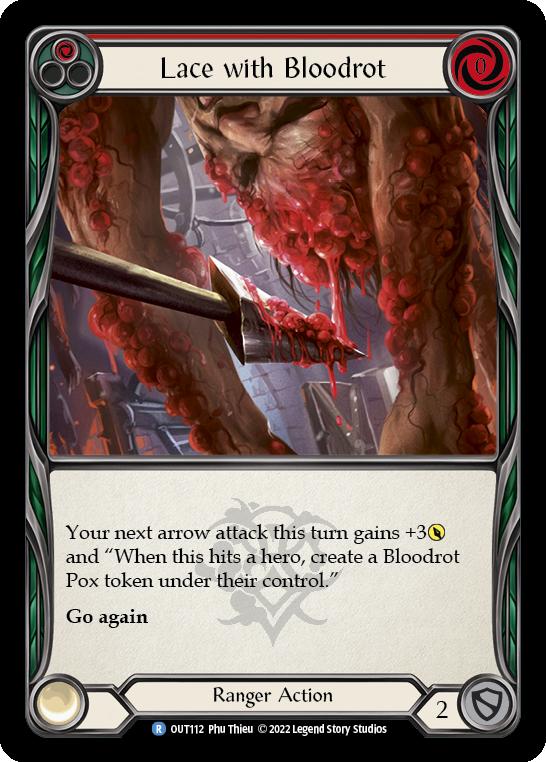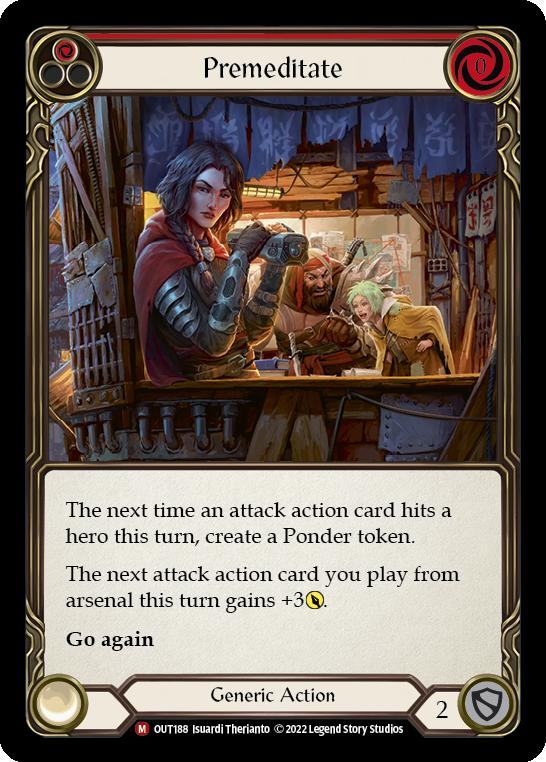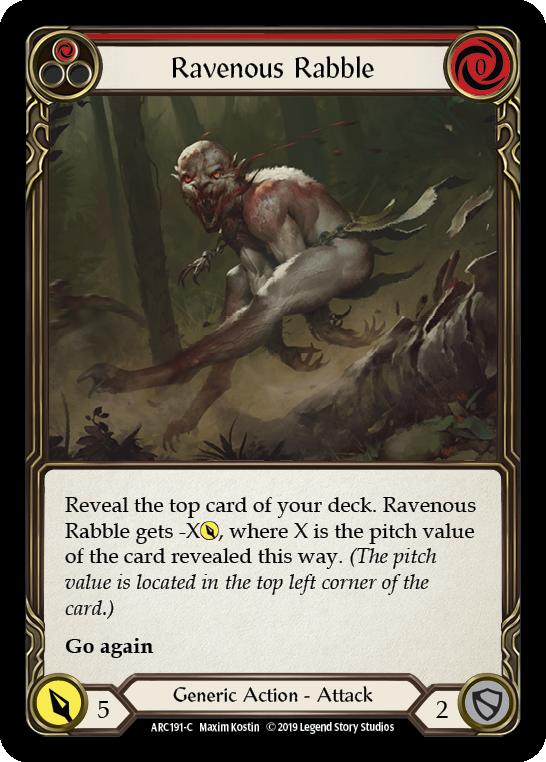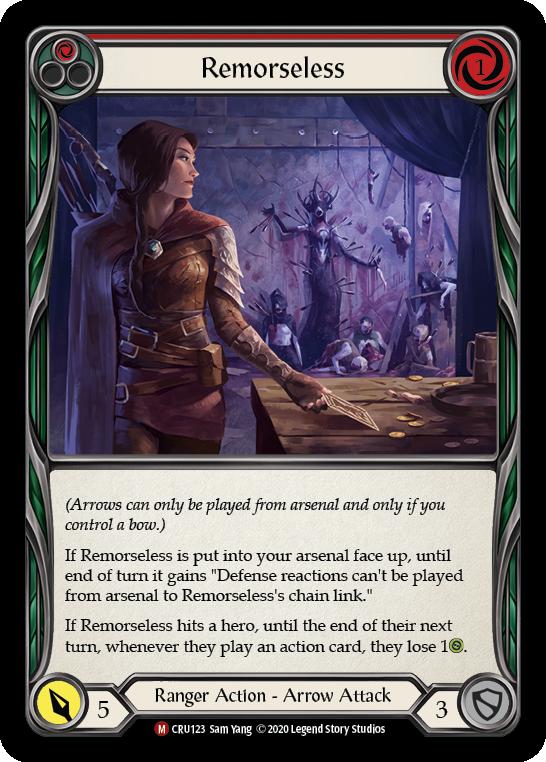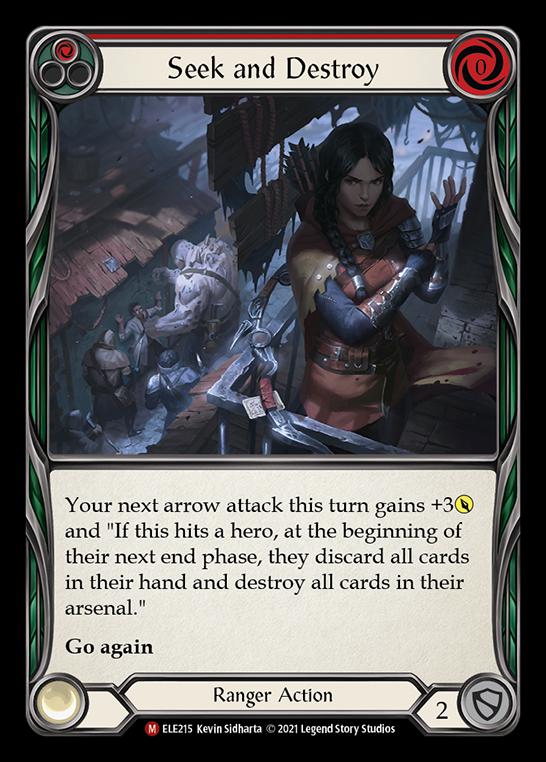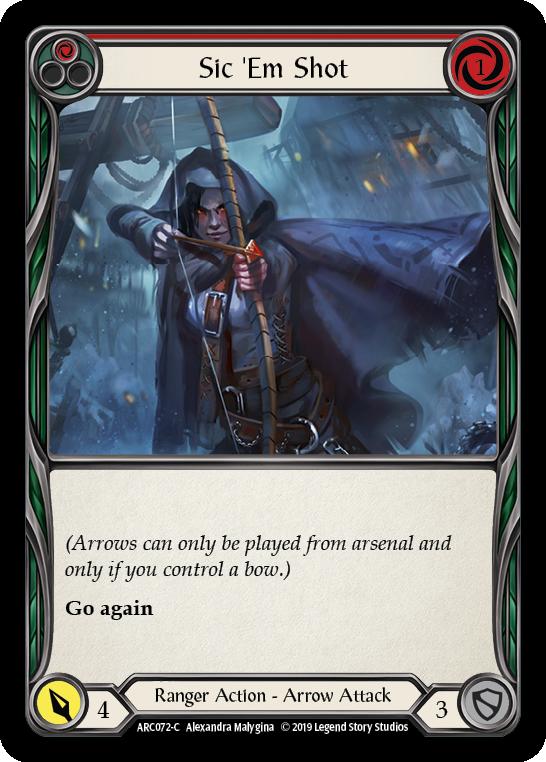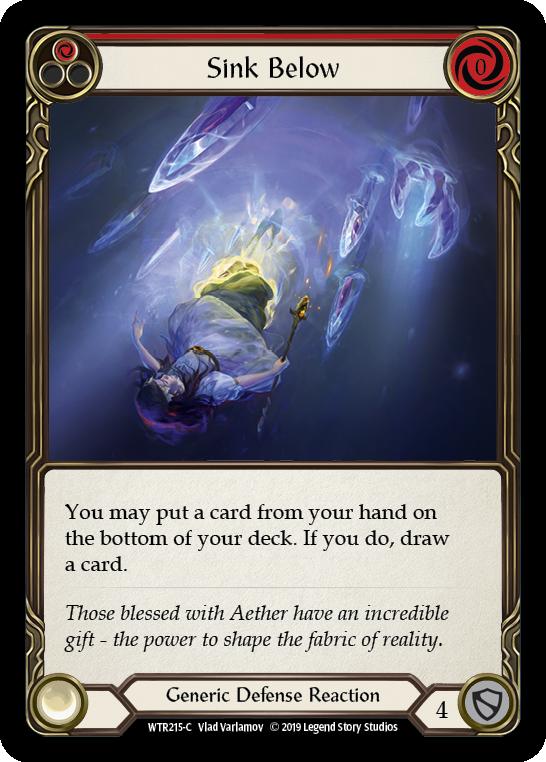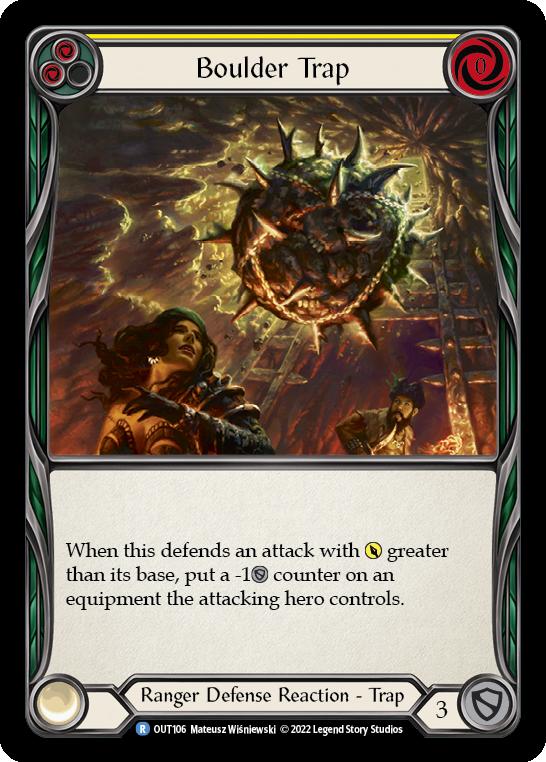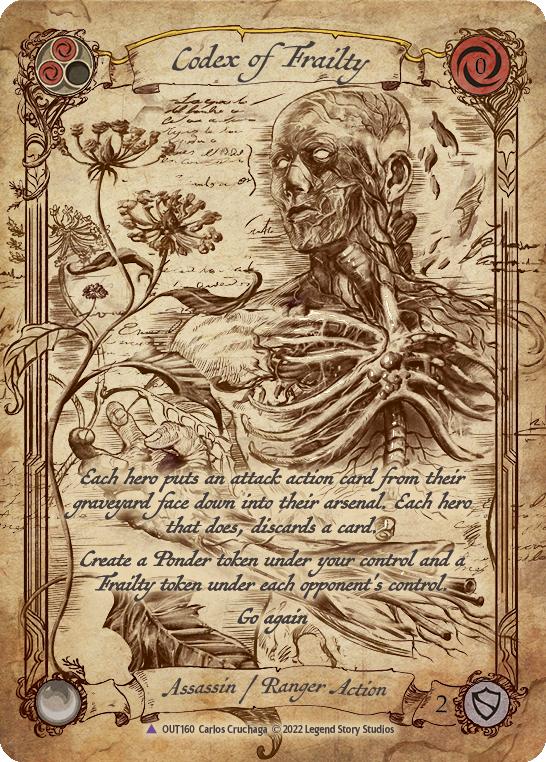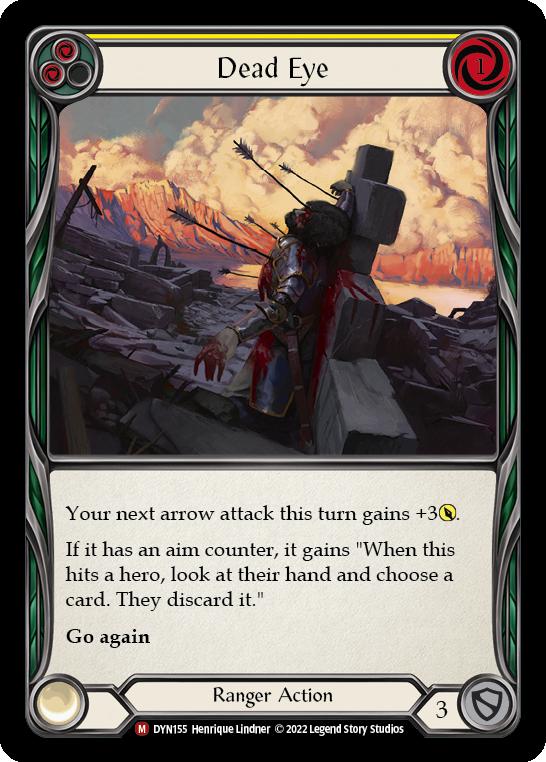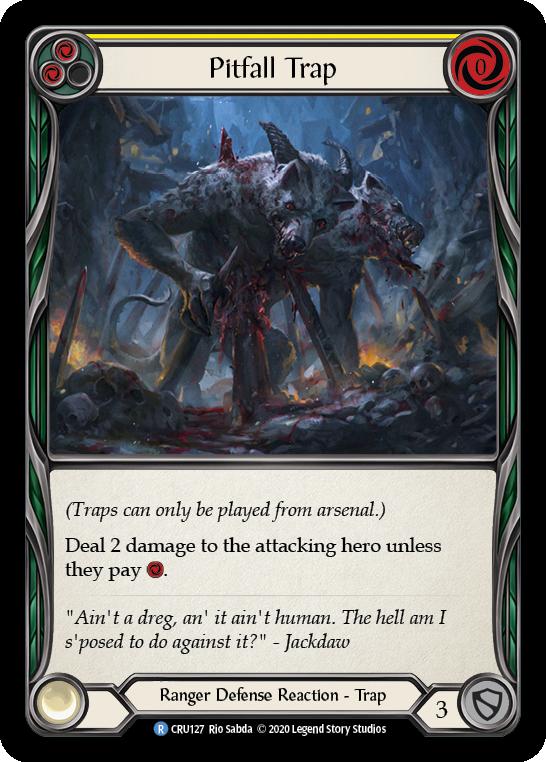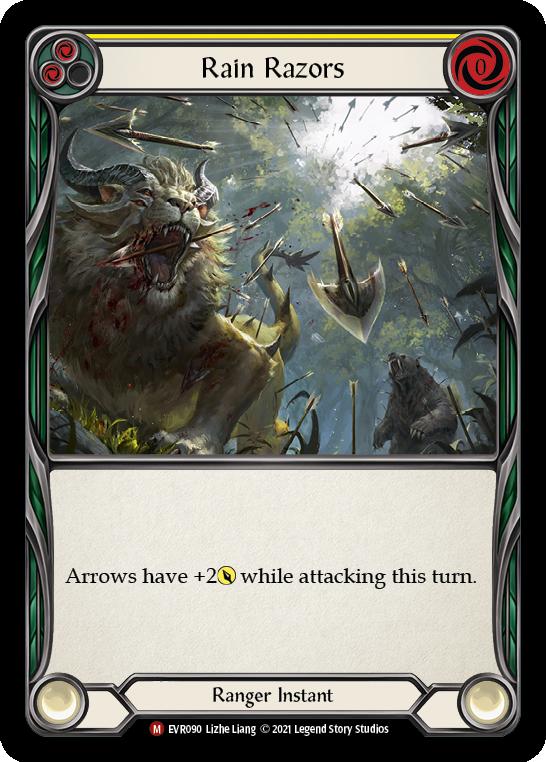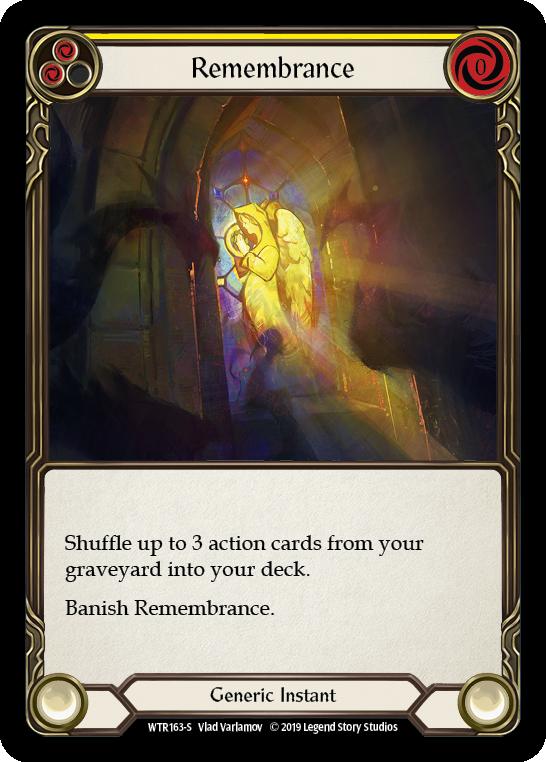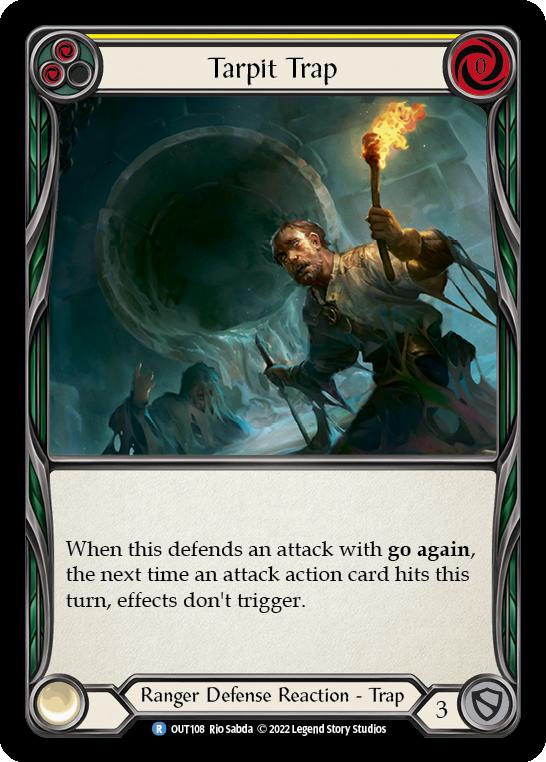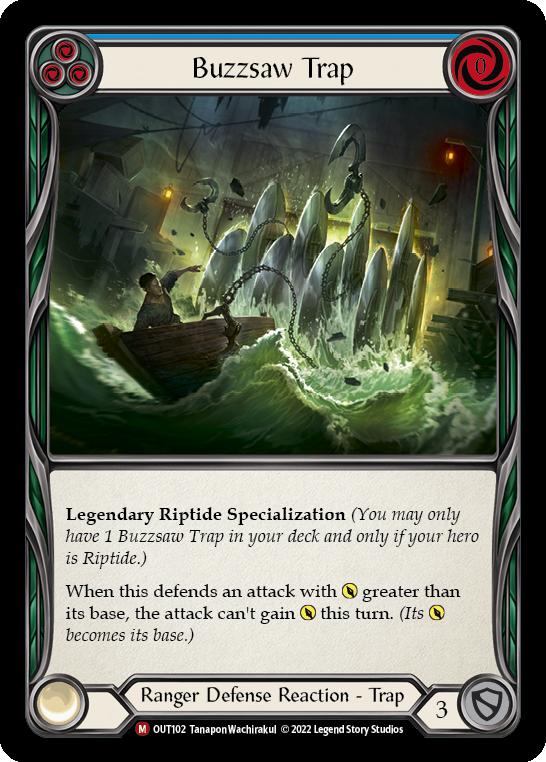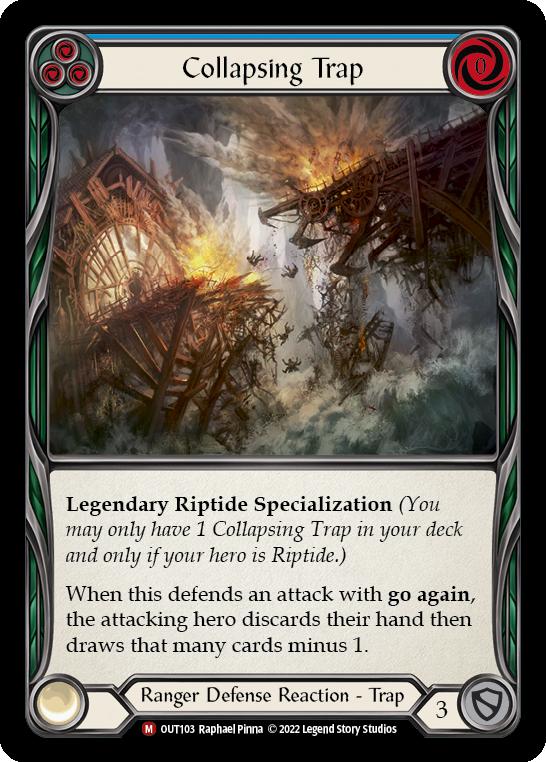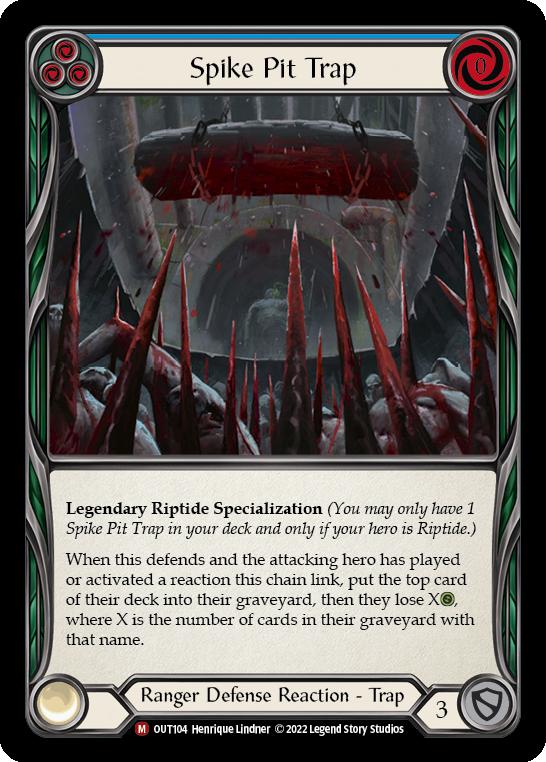Evergreen – Riptide, Lurker of the Deep

This is Rhys, back with a new edition of Evergreen, a series dedicated to helping you unlock the powers hidden deep within the heroes of Rathe. I know why you’re here. You like Ranger. Or maybe you like disruptive two-card seven-damage attacks, or that Nurgle guy from Warhammer. In some cases, tapping into the full power of an underdog of a hero can be a challenge. Let this act as a jumping off point for one of those underdogs, Riptide, Lurker of the Deep.
The Ranger class has historically been one that leans heavily on the aggressive end of the spectrum of Flesh and Blood gameplay. Azalea, Ace in the Hole is a hero where you basically shouldn’t block unless it’s a matter of life and death. The late and great Lexi, Livewire was similar, where you would really only block if you could make a hand recovery with something like Three of a Kind. Riptide, Lurker of the Deep is quite a departure from this philosophy, focusing heavily on the more back-and-forth aspect of the game, playing a defense reaction card type called a trap. Some of these traps have massive impact on the later stages of the game, while some are designed to help you survive to the late game.
Since Riptide’s ability can help place things in the arsenal zone when you play something from hand, it significantly lowers his reliance on resources, meaning you can often block all the way down to a two-card hand and still present a strong offensive attack. A Lace With Bloodrot played, loading a Searing Shot into arsenal with Riptide’s ability presents an implied ten damage for two cards and no resources.
If you’ve played with or against Azalea, Ace in the Hole, you know a lot of what you can expect from the disruptive arrows the Ranger class has to offer, which pair well with the devastating pumps you play to make them even more difficult to fully block. Before we get into the things that make Riptide very different from his fellow Rangers, I’ll share a deck list assembled by Battle Hardened: Taichung Top 8 competitor Dou Le TCG to help you get an idea of what a Riptide, Lurker of the Deep deck is doing.
" Riptide, Lurker of the Deep by Dou Le TCG"
This deck is comprised primarily of four moving parts: traps, arrows, arrow pumps, and what are referred to as extenders. Extenders are attacks that have go again that help “extend” the combat chain, making defense more complex than a single giant attack that players know Ranger for. These attacks also help clear allies found in decks like Prism, Awakener of Sol or Kassai of the Golden Sand. Since Riptide’s hero ability deals damage when the conditions are met for a trap to trigger, such as Tarpit Trap defending against an attack with go again, you’ll want to avoid defending with them outside of those situations if at all possible. Extracting those extra points of value from both the trap trigger and Riptide’s triggered ability is what will help you cross the finish line for the last bit of damage. If not, you run the risk of being fatigued out of attacks by more defensive decks.
Rip “The Tool Man” Tide
A unique thing about Riptide, Lurker of the Deep when compared to other Rangers is that he boasts an equipment suite that plays multiple bows. Death Dealer is particularly powerful, providing a virtual intellect if you use it, so it’s good enough to use against most heroes. This helps turn redundant arrows into opportunities to draw arrow pumps, or traps to set up at your end step. However, if you’re faced against a deck that is heavy on defense reactions like Guardians, Warriors, or even the Riptide mirror, Dreadbore is an absolute home run. Remember that arrows can’t be blocked by defense reactions from hand when you have Dreadbore equipped, even if you haven’t used the bow to load them into your arsenal. Paired with arrows like Remorseless, or arrows fired with a Release the Tension pumping it up, opposing heroes won’t be able to play defense reactions at all! Use this to your advantage, and avoid using multiple copies of those effects on a single arrow to ensure a good turn-over-turn damage consistency. This can really mess up your opponent on their turn, too, since they’re not likely to be able to make an efficient assault with two or three defense reactions stranded in their hand.
Most decks will play some amount of the trap cards printed in Crucible of War, which require being played from arsenal. Keep in mind that you can use a defense reaction from hand, and then use Riptide, Lurker of the Deep‘s hero ability to place one of those older traps into your arsenal, and still use it on the same chain link. It’s also worth noting that if you need to do this, but your arsenal is full, you can also use Trench of Sunken Treasure‘s ability at instant speed to remove the obstructing card. The deck in this article doesn’t currently play Trench of Sunken Treasure, opting instead for Fyendal’s Spring Tunic, but solid arguments can be made between a virtually free Death Dealer activation every three turns versus Trench’s arsenal-clearing capabilities. If you find yourself getting stranded with multiple traps in arsenal that prevent return attacks, consider picking between the equip that best aligns with your play style.
Since Riptide wants to threaten offensive turns as consistently as possible, be on the lookout for hands that can present multiple attacks. New Horizon creating an additional arsenal zone allows for turn sequences like: load an arrow with your bow, play an arrow pump from hand, allowing you to place another arrow into your extra arsenal slot face down. If the arrow you loaded with the bow has go again, attacking with it presents your opponent with a difficult decision. Do they block the damage from the arrow with go again, or do they wait for the face-down card from arsenal? If they wait, it could not be an arrow at all, and they wasted their opportunity to defend. If it is an arrow, but isn’t disruptive enough to have rewarded waiting, they allowed damage through that they didn’t have to. Using Snapdragon Scalers can help in scenarios where you might want to attack with two different disruptive arrows as well, so look for opportunities to lure your opponent into a mistake.
Upcoming Changes for Riptide
As you play Riptide, Lurker of the Deep, you’ll realize that his greatest struggle is into defensive decks, hopefully the mention of this multiple times throughout helps stress how troublesome they can be. This is due to his current card pool primarily designed to punish incoming attacks, so you may find yourself under heavy burden to pitch stack Riptide’s legendary traps to perfection for those last points of damage. This is going to be helpfully addressed with a new specialization arrow, Murky Water, releasing with Part the Mistveil. It may not often have dominate in decks at the time of this article’s writing, since they can’t currently produce aim counters. However, if you’re playing Dreadbore against an opposing defensive hero, loading this still presents a break point attack value of seven. This has a “rock and a hard place” effect, demanding either armor or extra cards to defend, and a heavy punishment of an added trap to arsenal if it isn’t. You can also bring it back with Codex of Frailty, so consistently threatening looped traps are in the Ranger’s future. This means you can use Spike Pit Trap with less apprehension since before this card’s release, you’d be under heavy pressure to only use the trap when the game had gone on quite some time to maximize its damage output.
Defensive decks are incentivized to play Warmonger's Diplomacy, a card that can threaten to completely shut down Riptide’s offensive turns. Alongside Murky Water is a new Ranger equipment called Longdraw Half-Glove, a one-time foil to being frozen out of a solidly offensive attack, while providing a point of battleworn defense. Bull’s Eye Bracers will still be the equipment of choice often, boasting a strong offensive ability while also providing arcane barrier. Learning which matchups you can expect to see Warmonger's Diplomacy will help you make an informed decision about which armor piece to use.
Experience Makes for a Good Trapper
If you’ve made it this far, you’ve noticed there isn’t a lot of “Here’s what you do.” When it comes to a deck with a defensive game plan, the correct decision is dynamic from game to game, hand to hand. Where a correct decision lies in one game, in others, the same four cards could require a different decision. For example, Codex of Frailty becomes a more powerful card as the game goes on, so you may find yourself incentivized to use it as a resource card in the early turns, when in the late turns it becomes the card you care the most about. The power of Ranger cards is dynamic, and Riptide, Lurker of the Deep is no exception to that rule. Minimizing redundant effects is usually better than not; arrows that disrupt blocking get better as the game progresses, pitching a pump every now and again to pair with an arrow for the second cycle is advisable, and pitching Rain Razors with Bolt'n' Shot will hugely benefit the late turns. The rest is up to you.
Thanks again for reading. I hope it’s of value to you and any of your locals who are looking for a way to level up their game!
